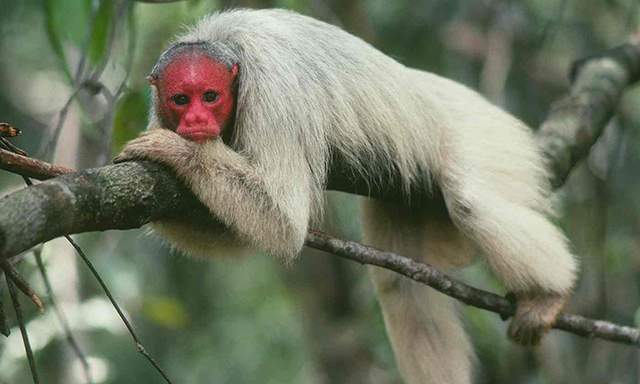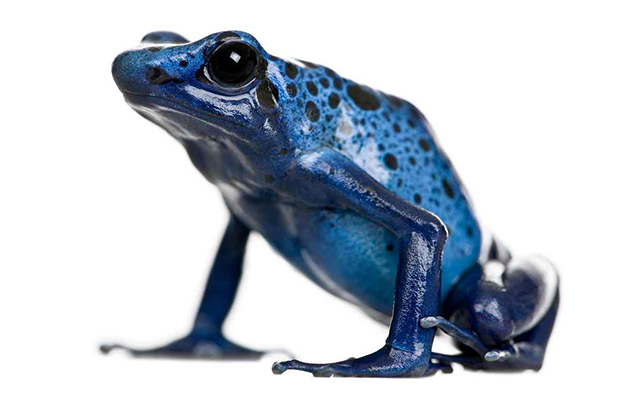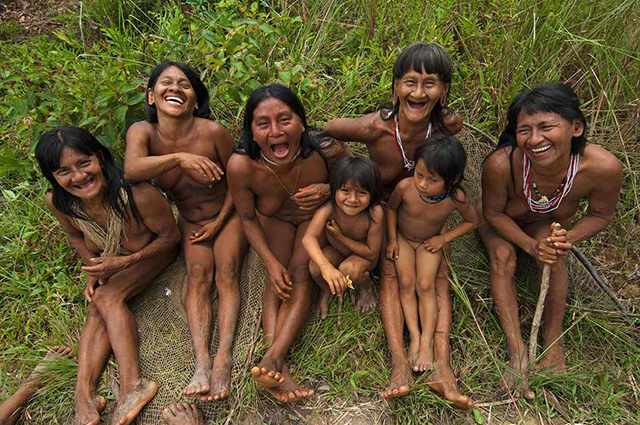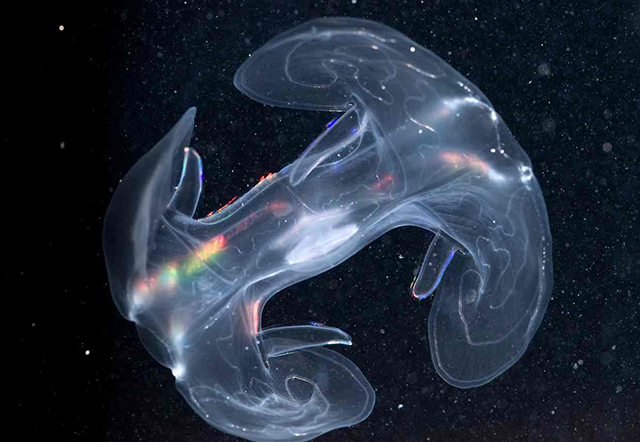“Could We Set Aside Half the Earth for Nature?”
By Jeremy Hance
Originally published in The Guardian, June 15, 2016


A bald uakari monkey (Cacajao calvus) in the flooded forest of the Amazon in Brazil. The IUCN Red List categorizes this species as vulnerable. Photograph: Alamy
As of today, the only place in the universe where we are certain life exists is on our little home, the third planet from the sun. But also as of today, species on Earth are winking out at rates likely not seen since the demise of the dinosaurs. If we don’t change our ways, we will witness a mass extinction event that will not only leave our world a far more boring and lonely place, but will undercut the very survival of our species.
So, what do we do?
E.O. Wilson, one of the world’s most respected biologists, has proposed a radical, wild and challenging idea to our species: set aside half of the planet as nature preserves.
“Even in the best scenarios of conventional conservation practice the losses [of biodiversity] should be considered unacceptable by civilised peoples,” Wilson writes in his new book, Half-Earth: Our Planet’s Fight for Life. One of the world’s most respected biologists, Wilson is known as the father of sociobiology, a specialist in island biogeography, an expert on ant societies and a passionate conservationist.


A blue poison dart frog ( Dendrobates azuresus) photographed in a studio. Even as scientists fear for global biodiversity, amphibians are already suffering from an extinction crisis. Scientists believe we have lost around 200 species of amphibians in recent decades. Photograph: Life on white / Alamy
In the book, Wilson argues eloquently for setting aside half of the planet for nature, including both terrestrial and marine ecosystems. He writes that it’s time for the conservation community to set a big goal, instead of aiming for incremental progress.
“People understand and prefer goals,” he writes. “They need a victory, not just news that progress is being made. It is human nature to yearn for finality, something achieved by which their anxieties and fears are put to rest…It is further our nature to choose large goals that while difficult are potentially game-changing and universal in benefit. To strive against odds on behalf of all life would be humanity at its most noble.”
The reason why half is the answer, according to Wilson, is located deep in the science of ecology.
“The principal cause of extinction is habitat loss. With a decrease of habitat, the sustainable number of species in it drops by (roughly) the fourth root of the habitable area,” Wilson wrote via email, referencing the species-area curve equation that describes how many species are capable of surviving long-term in a particular area.
By preserving half of the planet, we would theoretically protect 80% of the world’s species from extinction, according to the species-area curve. If protection efforts, however, focus on the most biodiverse areas (think tropical forests and coral reefs), we could potentially protect more than 80% of species without going beyond the half-Earth goal. In contrast, if we only protect 10% of the Earth, we are set to lose around half of the planet’s species over time. This is the track we are currently on.
“The extinction rate our behavior is now imposing on the rest of life, and seems destined to continue, is…the equivalent of a Chicxulub-sized asteroid strike played out over several human generations,” Wilson writes in Half-Earth, referencing the asteroid that wiped out the dinosaurs – at least those that didn’t evolve into birds.
According to the World Database on Protected Areas, the world has protected 15.4% of terrestrial area, including inland waters, as of 2014. But protection of the oceans lags far behind with only 3.4% of marine environments under some form of protection. The Aichi Biodiversity Target has set a goal of protecting 17% of land areas and 10% of the oceans by 2020.
But Wilson writes in his book that this is “in fact nowhere close to enough.”
Wilson’s big idea, of course, is not without its critics. In an essay for Aeon, Robert Fletcher and Bram Büscher, both social scientists with Wageningen University in the Netherlands, dub Wilson’s idea “truly bizarre.”
“For all his zeal, (misplaced) righteousness and passion, his vision is disturbing and dangerous,” they write. “It would entail forcibly herding a drastically reduced human population into increasingly crowded urban areas to be managed in oppressively technocratic ways. How such a global programme of conservation Lebensraum would be accomplished is left to the reader’s imagination.”
Fletcher and Büscher argue that the poor and politically marginalised would be most injured by any plan to so drastically increase the reach of protected areas.
Indeed, conservation has a long and ugly history of forcibly moving indigenous and local people out of areas to make way for protected areas. Yet Wilson said that the half Earth goal would include indigenous territories, which have become increasingly common in Latin America and Australia and could play a big role in other parts of the allowed. Such areas are also increasingly seen by conservationists as key in the fight to protect nature. For example, indigenous territories currently cover around 13% of Brazil, including massive chunks of the Amazon rainforest.
Wilson said that indigenous people “are often the best protectors” of their own lands. In other words, the half-Earth goal would not simply mean banning people from half of the planet’s land area, but keeping these areas undeveloped.


Laughing Hauorani women and children sitting in the forest in the Bameno Community Ecuador’s Yasuni National Park. Conservationists are belatedly recognising that indigenous people may be the world’s strongest defense against deforestation and biodiversity loss, yet most indigenous people still lack rights to their customary lands. Photograph: Alamy
He also said that nature reserves would not have to ban all human activities, but could incorporate various activities in some portions.
“The U.S. National Park Service has begun the practice of designated preserves within the park boundaries where hunting and fishing are allowed,” Wilson said.
Protected areas today are increasingly diverse, including not just strictly protected areas but community conservation areas – which are set up by local communities – and sustainable-use reserves, which often allow a broad expanse of human activities under certain regulations.
Wilson points to Gorongosa National Park in Mozambique as an example of how protected areas, if managed well and funded, can actually benefit local people.
“The maintenance and expansion of this magnificent reserve has been enhanced by the improvement of agriculture, health, and education – and new jobs – in buffer zones. The same effect is demonstrable even within industrialized nations,” he said.
Recent research has found that contrary to popular belief, protected areas may actually improve the conditions of local communities (at least in countries like Uganda, Thailand and Costa Rica) instead of impoverishing them.
Wilson also insisted that current property rights would not have to be taken away. Instead governments could use various incentives to support nature conservation on private property. Wilson pointed to the U.S.’s National Nature Landmarks programme as an example, which encourages landowners to protect important biological and geologic sites. However, in order to protect half of the planet, incentive programmes like these would need to be drastically scaled up around the world and receive far more funding.
And that presents us with a question: is setting aside half of our land for nature even possible? Maybe – but maybe not. In 2005, scientists with the University of Wisconsin-Madison estimated that humans used around 40% of the world’s land area already for farming (an additional 3% of land area is taken up by urban development). There is no question that the percentage of land devoted to agriculture has gone up in the last decade, even as the global population has risen by nearly a billion people since then. However, notably, 75% of our agricultural land area is currently devoted to growing crops for livestock consumption. The amount of land required for agriculture today could be drastically curtailed – but only if people eat significantly less meat and livestock products, a trend that is currently going in the opposite direction globally.
“We are still too greedy, shortsighted, and divided into warring tribes to make wise, long-term decisions,” Wilson warns in Half-Earth.
Degraded or abandoned lands, of course, could also be rehabilitated and rewilded with species, tools that are increasingly popular among conservationists today. But again such activities would need to take a quantum leap in order to achieve the half-Earth goal.


A Ctenophore or Comb Jellyfish collected off Wassteri reef, Heron Island in far north Queensland, is seen in this undated photo obtained September 18, 2008. Photograph: Gary Cranitch/Reuters
Relatively speaking, protecting half of the oceans would be far more straightforward. In addition to protecting portions of their coastlines, nations would have to come together to agree to cordon off a significant percentage of the high seas to fishing – the main activity that takes place there today – and cut them off from any future attempts at mining or fossil fuel development among other potential extractive activities.
Of course, habitat loss isn’t the only threat to biodiversity today. Wildlife is facing a barrage of other impacts including climate change, ocean acidification, both legal and illegal trade, pollution, and invasive species among others. But biologists agree almost unanimously that habitat loss remains the biggest threat to biodiversity worldwide. And protecting more of the planet could also contribute to solving other environmental problems, including climate change. Today deforestation and degradation accounts for around 15% of the world’s annual carbon emissions.
Wilson said “ignorance” was the biggest barrier to achieving his goal of protecting half of the Earth.
“When people are encouraged to take a close look at the remnants of nature, in its complexity, beauty, and majesty, and when they understand that the natural environment is the home of their deep history, many become the reserves’ most ardent supporters.”

